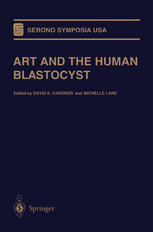

Most ebook files are in PDF format, so you can easily read them using various software such as Foxit Reader or directly on the Google Chrome browser.
Some ebook files are released by publishers in other formats such as .awz, .mobi, .epub, .fb2, etc. You may need to install specific software to read these formats on mobile/PC, such as Calibre.
Please read the tutorial at this link: https://ebookbell.com/faq
We offer FREE conversion to the popular formats you request; however, this may take some time. Therefore, right after payment, please email us, and we will try to provide the service as quickly as possible.
For some exceptional file formats or broken links (if any), please refrain from opening any disputes. Instead, email us first, and we will try to assist within a maximum of 6 hours.
EbookBell Team

4.0
26 reviewsThe field of human artificial reproductive technology (ART) is continually advancing and has witnessed significant changes since the inception of Louise Brown in 1978. Though Louise Brown herself was conceived after the trans fer of a blastocyst, there remain significant confusion and debate regarding the stage at which the human embryo conceived in the laboratory should be replaced in the mother. Developments in culture media formulations, leading to the introduction of sequential media, have brought the role of the blasto cyst in human ART back into the spotlight. It was due to this resurgence of interest in the niche of extended culture in human infertility treatment that the symposium on "ART and the Human Blastocyst" was held. of this meeting within this volume bring to the forefront The proceedings the main issues raised with the transfer of embryos at the blastocyst stage. It is evident from the chapters that follow that ART needs to be perceived as a continuum of procedures, each one dependent on the preceding one, and all equally as important as each other. That is to say, the development of a com petent embryo is ultimately dependent on the quality of the gametes from which it was derived. With regard to the oocyte, this then places the emphasis on the physician to use a stimulation protocol that both produces quality oocytes and does not impair endometrial function. Maintenance of gamete and embryo quality is the laboratory's role.